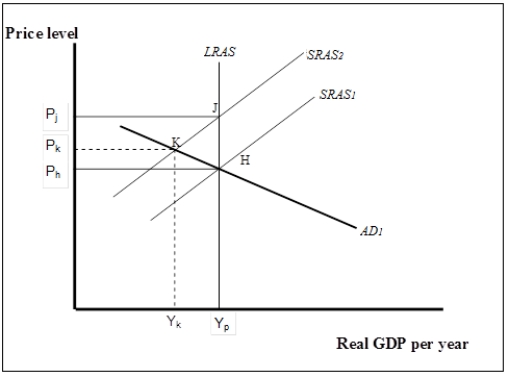Multiple Choice
Figure 7-7 
-Refer to Figure 7-7. Suppose the economy is initially at K. Which of the following statements best explains how the economy responds to restore long-run macroeconomic equilibrium?
A) Over time, the aggregate demand curve will shift to the right until long-run equilibrium is restored at J and the gap is closed.
B) Rising unemployment puts pressure on nominal wages to fall. The SRAS curve shifts right to SRAS1 closing the gap at H.
C) In response to rising prices, firms will increase production moving along SRAS2 until long- run equilibrium is restored at J and the gap is closed.
D) Rising unemployment puts pressure on nominal wages to fall. Firms employ more workers moving along SRAS2 until long-run equilibrium is restored at J and the gap is closed.
Correct Answer:

Verified
Correct Answer:
Verified
Q3: Using the aggregate demand-aggregate supply model, predict
Q12: All the following explain price stickiness except<br>A)
Q49: Figure 7-6 <img src="https://d2lvgg3v3hfg70.cloudfront.net/TB5507/.jpg" alt="Figure 7-6
Q56: Figure 7-2 <img src="https://d2lvgg3v3hfg70.cloudfront.net/TB5507/.jpg" alt="Figure 7-2
Q57: An increase in the prices of natural
Q81: A movement along the short-run aggregate supply
Q114: Public policy to eliminate a recessionary gap
Q119: What are the four sources of aggregate
Q158: If an economy is operating at its
Q164: In the short-run, an output gap occurs